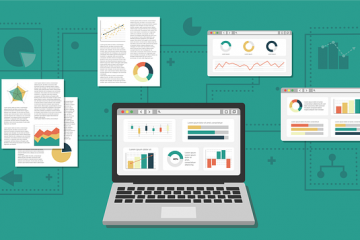MM008 – Self-Service Analytics: the Revolution of Business Intelligence
Raise your hand if you have never ever heard about the Digital Revolution! Words like Big Data, Business Intelligence, Advanced Analytics, Artificial Intelligence, Machine Learning and so on, spread around by word of mouth in the business environment (and beyond) like a contagious virus.
As data is widely acknowledged to be “the New Oil”, in the corporate environment steadily grows the need for extracting as much information as possible from the enormous amount of data (both structured and unstructured) collected from several sources, looking for hidden paths and apparently uncorrelated drivers.
“The goal is to turn data into information, and information into insight.”
(Carly Fiorina, Former CEO of HP)
That said though, it must be remarked that it is hard to extract valuable information from available data. Besides, it looks like data is somehow “not democratic”. The way Business Intelligence (BI) has worked over the years (and it vastly works today), consists in fact of a data provider (technically highly skilled) who manages and prepares data, reports and dashboards according to end-user needs and specifications.
“BI is about providing the right data at the right time to the right people so that they can take the right decisions”
(Nic Smith with Microsoft BI Solutions Marketing)
This paradigm allows for analysis reliability and the possibility to perform complex and detailed ones, on the other hand, it also shows some downsides. Specifically, many organizations still do not base their management decisions on data as the IT department can’t keep the pace with the continuous demand of information by users. As the IT department is entirely responsible for the report preparation and dealing with change requests, it may take a significant amount of time before relevant information can finally be used. As a consequence, this often results in poor user satisfaction. In this context, Self-Service Analytics can offer significant advantages.
What do we mean with Self-Service Analytics?
Self-Service Analytics (SSA) is a kind of BI whereby users are empowered to perform queries and self-generate reports. Fundamental requisites of SSA are easy-to-use tools and functions with basic analytic capabilities, a simple underlying data model that is also easy to access and the possibility to share the results of the analysis. In such a way, users are enabled to produce, organize and visualize information or personalize dashboards in the way they prefer, loosening the tight dependency on the IT department.
Among the reasons that in the last years contributed to accelerate the diffusion of SSA, we may include the following:
- Time constraints: end-users don’t want or can’t afford to wait for too long while IT implements the requested changes. SSA would at least partially speed up operations and allow users to investigate different scenarios autonomously.
- Lack of competences: end-users are generally not technically skilled in the field of data preparation and visualization. The simplicity of SSA would narrow the competence gap as well as make communication easier between the IT and end-users.
- Becoming a data-driven organization: especiallyin highly dynamic industries, information becomes critical to take right and fasters decisions, as firms cannot afford taking the wrong direction. Rather than trusting their gut or intuition, organizations should rely on data and decide faster.
However, SSA has some downsides, too. Some may question that granting a wider access to data may cause problem of unauthorized access and privacy violations. In addition, letting user prepare their own data may cast doubts on whether the analysis is correct and the results reliable.
To sum up, Self-Service Analytics is no Holy Grail able to solve all sort of business problems. Neither it must be intended as a substitute of traditional BI. They should rather be used as complementary tools in order to extract the maximum value from both typologies. Resorting to Gartner definition, firms should build a “Bimodal BI” framework, namely manage concurrently both forms of BI, the traditional one focused on precision and stability in the long term, while the new one centered on speed, agility and user-friendliness.
Easy? No, of course. Such an approach requires in fact the integration of two apparently mutually exclusive frameworks, the traditional centralized one and the modern decentralized one. As usual, experimentation is the key, possibly starting by sharing small, selected portions of data, in order to allow users to explore without sacrificing data governance and data quality.
Also several of our clients, from manufacturing to sales industries, are shifting towards the new paradigm. Early adopters were small and medium firms, due to lower switching costs than highly structured organizations and greater flexibility. Today self-reporting is being adopted widely, regardless of firm size, and has become essential for end-users.
In Business Intelligence, the rising of software as Microsoft Power BIandQLIK Sense are, in fact, reshaping the business model.
In Corporate Performance Management as well, a significant event was the distribution of IBM Planning Analytics Workspace, a new web-based user interface for IBM Planning Analytics (PAW). This tool supports multidimensional self-service analytics, what-if scenario modelling and allows users to easily explore data and create dashboards, enhancing planning, budgeting and forecasting analysis and reporting.
Fast, smart, interactive, user oriented. Users are becoming more and more aware of the enormous advantages and high potential of SSA, leading and accelerating the revolution of Business Intelligence.
[Want to know more about IBM PAW? Click here]
—-
References:
[C. Imhoff, C. White] – Self-Service Business Intelligence. Empowering Users to Generate Insights (THIRD Quarter 2011).
Self-Service Data Access: The Foundation for Emerging Analytics (https://tdwi.org/articles/2016/09/14/self-service-data-access.aspx)
Self service data analytics: le analisi alla portata di tutti? (https://www.zerounoweb.it/analytics/big-data/self-service-data-analytics-le-analisi-alla-portata-di-tutti/)
Gartner: il self-service rivoluziona il mondo BI e Analytics. «Ma business e IT devono collaborare» (https://www.digital4.biz/executive/gartner-il-self-service-rivoluziona-il-mercato-bi-e-analytics-ma-business-e-it-devono/)



